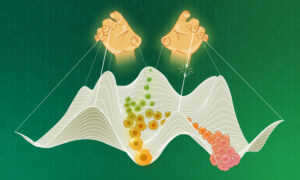
A special puppeteer holds the strings to liver cells’ identity
Scientists at EMBL and DKFZ have discovered how cells in the liver maintain their identity and avoid becoming tumour cells.
SCIENCE & TECHNOLOGY2025
science-technology
Showing results out of

Scientists at EMBL and DKFZ have discovered how cells in the liver maintain their identity and avoid becoming tumour cells.
SCIENCE & TECHNOLOGY2025
science-technology
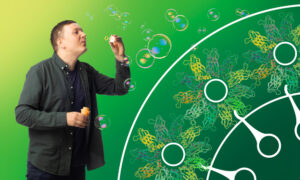
Veijo Salo, postdoc at EMBL Heidelberg, talks about seipin, the cell’s molecular ‘bubble blower’.
PEOPLE & PERSPECTIVES2024
people-perspectives
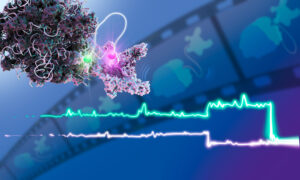
With a novel approach, EMBL scientists discovered important interactions between molecular machines, potentially offering new opportunities for drug development.
SCIENCE & TECHNOLOGY2024
science-technology
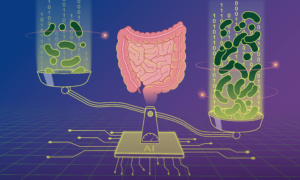
Scientists have developed a new machine-learning model to predict microbial load — the density of microbes in our guts — and used it to demonstrate how microbial load plays an important role in disease-microbiome associations.
SCIENCE & TECHNOLOGY2024
science-technology
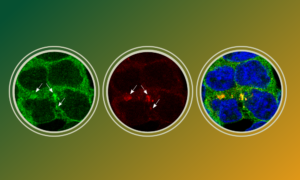
Scientists have discovered how the antiviral protein TRIM25 finds and binds viral RNA to activate an innate immune response.
SCIENCE & TECHNOLOGY2024
science-technology
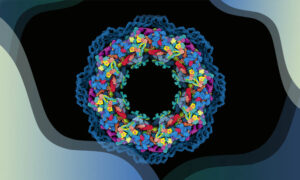
The function of biological molecules is intimately linked to their structure. In the 50 years since EMBL was established, its researchers and engineers have constantly provided leadership in structural biology research and services, resulting in many scientific breakthroughs and novel insights.
SCIENCE & TECHNOLOGY2024
science-technology
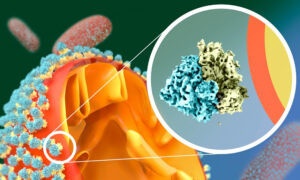
Scientists at EMBL Heidelberg and University of Virginia revealed a new cellular response to starvation: ribosomes attach to the mitochondrial outer membrane in a very unusual way, via their small subunit. The finding made in yeast might provide insights into how cancer cells survive the harsh…
SCIENCE & TECHNOLOGY2024
science-technology
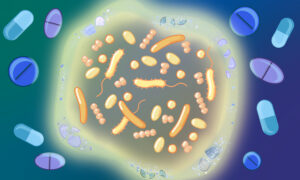
EMBL Heidelberg researchers compared the effect of drugs on isolated bacteria versus those growing in communities. This is the first study showing that bacteria are more resilient when in community due to cross-protection strategies. This could help researchers design more efficient therapies.
SCIENCE & TECHNOLOGY2024
science-technology

Julia Mahamid and Nassos Typas reflect on the direction of the Molecular Systems Biology Unit they now lead at EMBL Heidelberg.
PEOPLE & PERSPECTIVES2024
people-perspectives
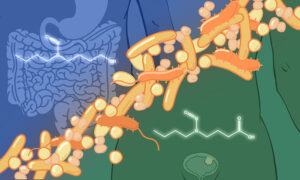
Study shows that gut bacteria can metabolise carcinogens and cause them to accumulate in distant organs, leading to tumour development.
SCIENCE & TECHNOLOGY2024
science-technology
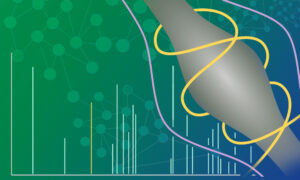
The dynamic world of proteomics is shaping the future of personalised medicine, but some obstacles stand in the way
SCIENCE & TECHNOLOGY2024
perspectivesscience-technology

EMBL researchers and their partners have been studying microbial functions and interactions for the benefit of human and planetary health for the last two decades.
SCIENCE & TECHNOLOGY2024
science-technology

Toby Gibson reflects on 38 years at EMBL, the scientific tools he built along the way, and the state of science today.
PEOPLE & PERSPECTIVES2024
people-perspectives
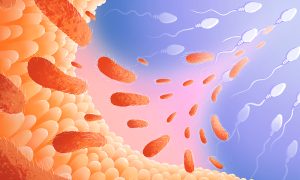
Scientists from EMBL Rome and EMBL Heidelberg found that disrupting the gut microbiome of male mice increases the risk of disease in their offspring. Their findings suggest that a father’s pre-conception environment can have lifelong effects on offspring.
SCIENCE & TECHNOLOGY2024
science-technology

Team Leader Sameer Velankar on why accessible training is key for AlphaFold and AI tools more generally.
PEOPLE & PERSPECTIVES2024
people-perspectivesperspectivesscience

Simone Heber talks about studying RNA transport, organising the Bike Club at EMBL, and participating in the Ironman World Championship.
LAB MATTERSPEOPLE & PERSPECTIVES2024
lab-matterspeople-perspectives

Renato Alves talks about his time at EMBL, the Bio-IT project, his wishes for EMBL in its anniversary year, and how a passion for night hikes and stargazing led to the creation of EMBL’s astronomy club.
LAB MATTERSPEOPLE & PERSPECTIVES2024
lab-matterspeople-perspectives

Jan Kosinski, Julia Mahamid, and Georg Zeller have received grants to enable ambitious projects aimed at mapping the cellular protein synthesis machinery in context and understanding complex host-microbiome interactions, respectively.
EMBL ANNOUNCEMENTS2023
embl-announcementsscience

Here are six takeaways from a recent EMBO/EMBL symposium that brought together scientists to discuss the state of research involving the human microbiome and its connection to health and disease.
SCIENCE & TECHNOLOGY2023
eventsscience-technology
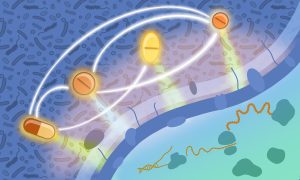
In an extensive investigation, EMBL researchers have tested over 10,000 drug combinations against some of the leading pathogenic bacteria carrying antimicrobial resistance and causing mortality.
SCIENCE & TECHNOLOGY2023
sciencescience-technology
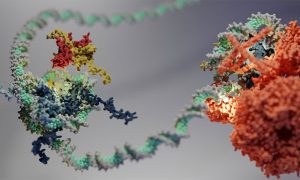
Research from the Eustermann group at EMBL Heidelberg reveals how the packaging of DNA into hexasomes impacts the function of enzymes involved in gene regulation.
SCIENCE & TECHNOLOGY2023
sciencescience-technology

Home to some of Europe’s most cutting-edge tools in molecular biology, EMBL has long shared its expertise and access to these tools through an extensive repertoire of courses, conferences, seminars, and other training. And now included in this mix is a job shadowing programme at EMBL Imaging…
LAB MATTERSSCIENCE & TECHNOLOGY2023
lab-mattersscience-technology
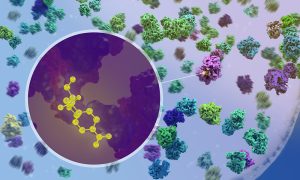
New research by EMBL scientists shows at atomic detail how antibiotics affect the process of protein production inside bacteria.
SCIENCE & TECHNOLOGY2022
sciencescience-technology

Michael Dorrity, one of EMBL’s newest group leaders, is studying how the environment influences early life stages in zebrafish.
LAB MATTERSPEOPLE & PERSPECTIVES2022
lab-matterspeople-perspectives

Svetlana Dodonova is one of EMBL's newest group leaders, leading a team of researchers who will study how genetic material is organised inside cells using structural biology approaches.
LAB MATTERSPEOPLE & PERSPECTIVES2021
lab-matterspeople-perspectives

Distinctions recognise Peer’s development and sharing of bioinformatics tools as well as his significant contributions to bioinformatics research, education, and services.
LAB MATTERSPEOPLE & PERSPECTIVES2021
lab-matterspeople-perspectives

The EMBL Imaging Centre is scheduled to open in 2021 with Timo Zimmermann as Team Leader for advanced light microscopy technology development and service provision.
LAB MATTERSPEOPLE & PERSPECTIVES2021
lab-matterspeople-perspectives
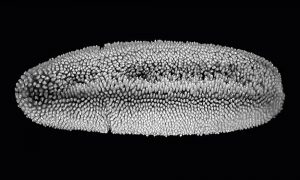
Discoveries at EMBL will help researchers to interpret one of the most common types of experiments in genomics and medical studies.
SCIENCE & TECHNOLOGY2020
sciencescience-technology

New possibilities for gene therapies
SCIENCE & TECHNOLOGY2019
sciencescience-technology
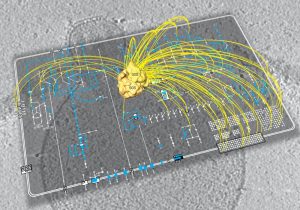
What are the bare essentials of life, the indispensable ingredients required to produce a cell that can survive on its own? Can we describe the molecular anatomy of a cell, and understand how an entire organism functions as a system? These are just some of the questions that scientists in a…
SCIENCE & TECHNOLOGY2009
sciencescience-technology
No results found